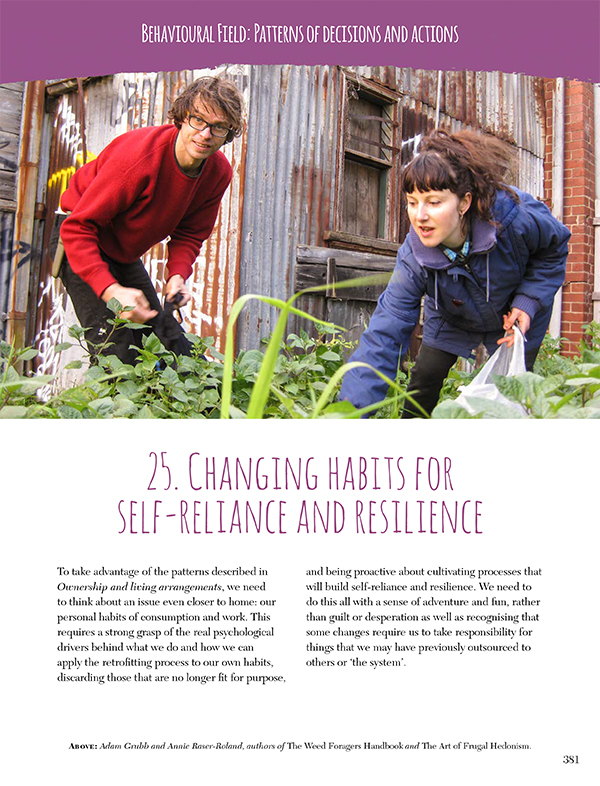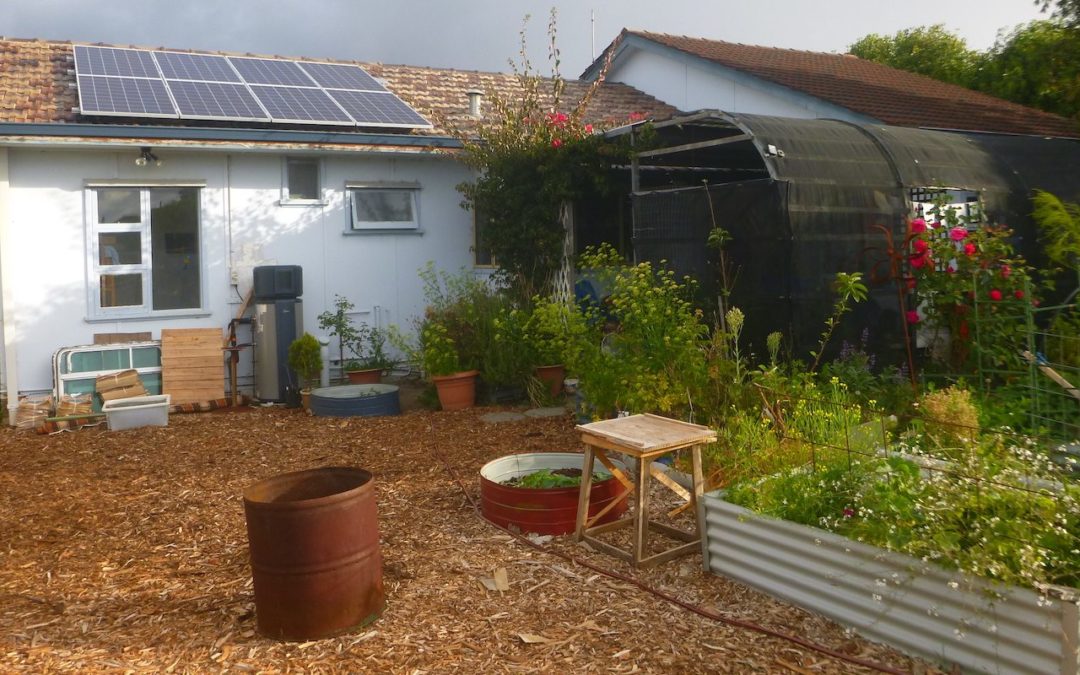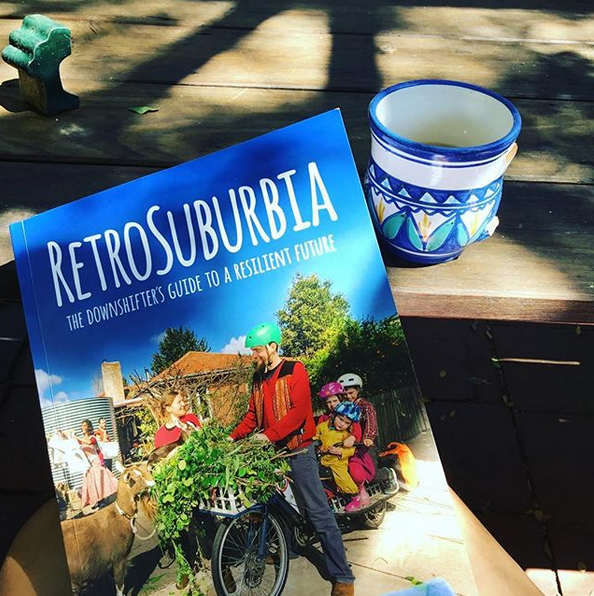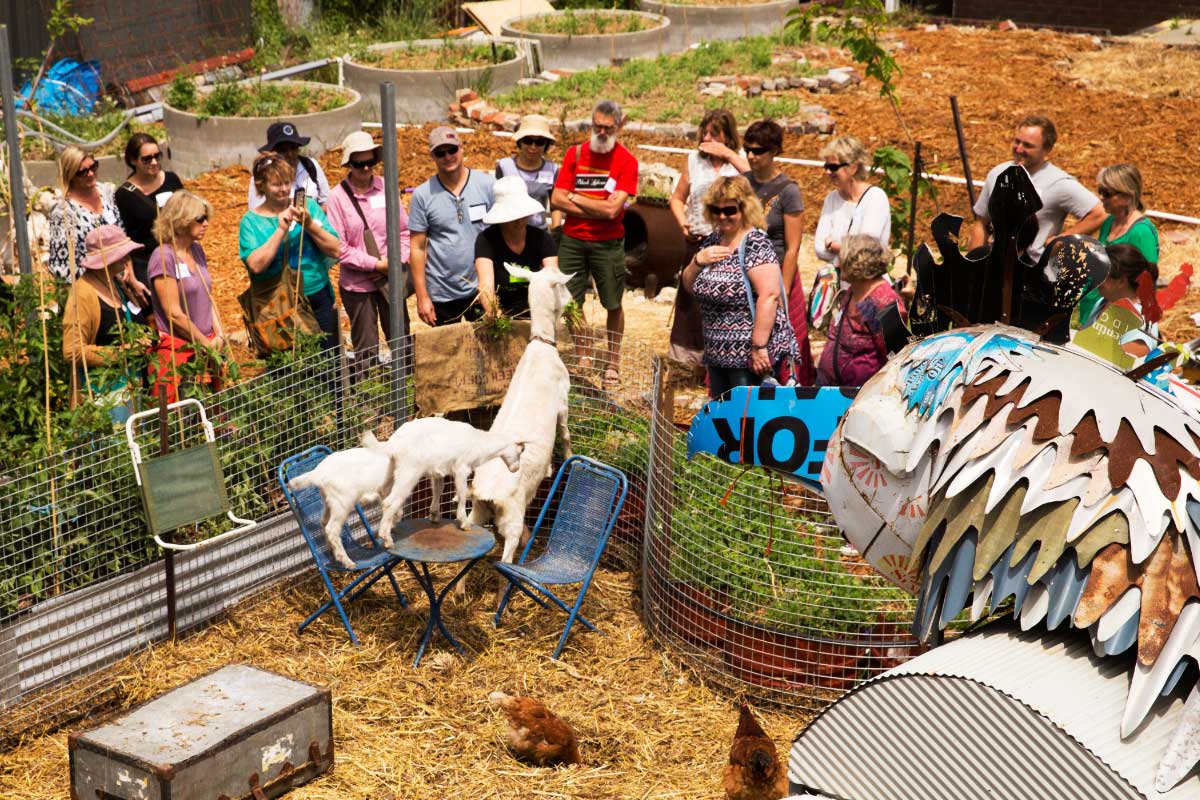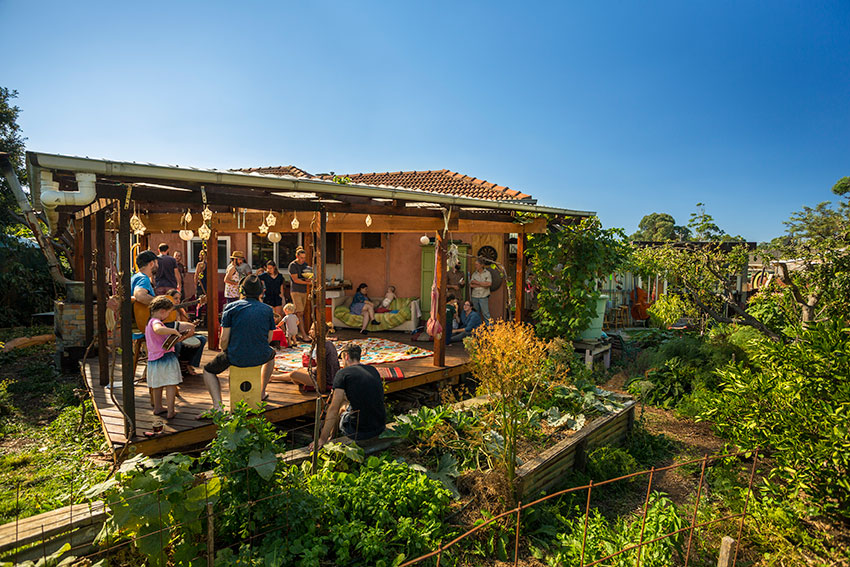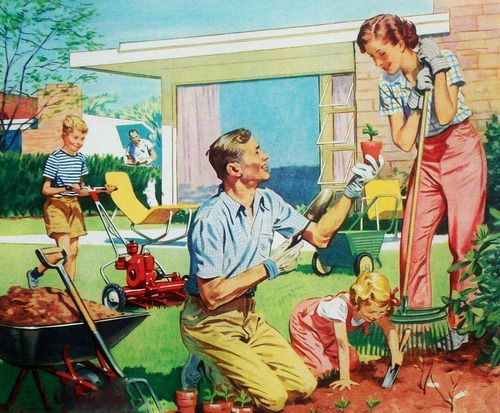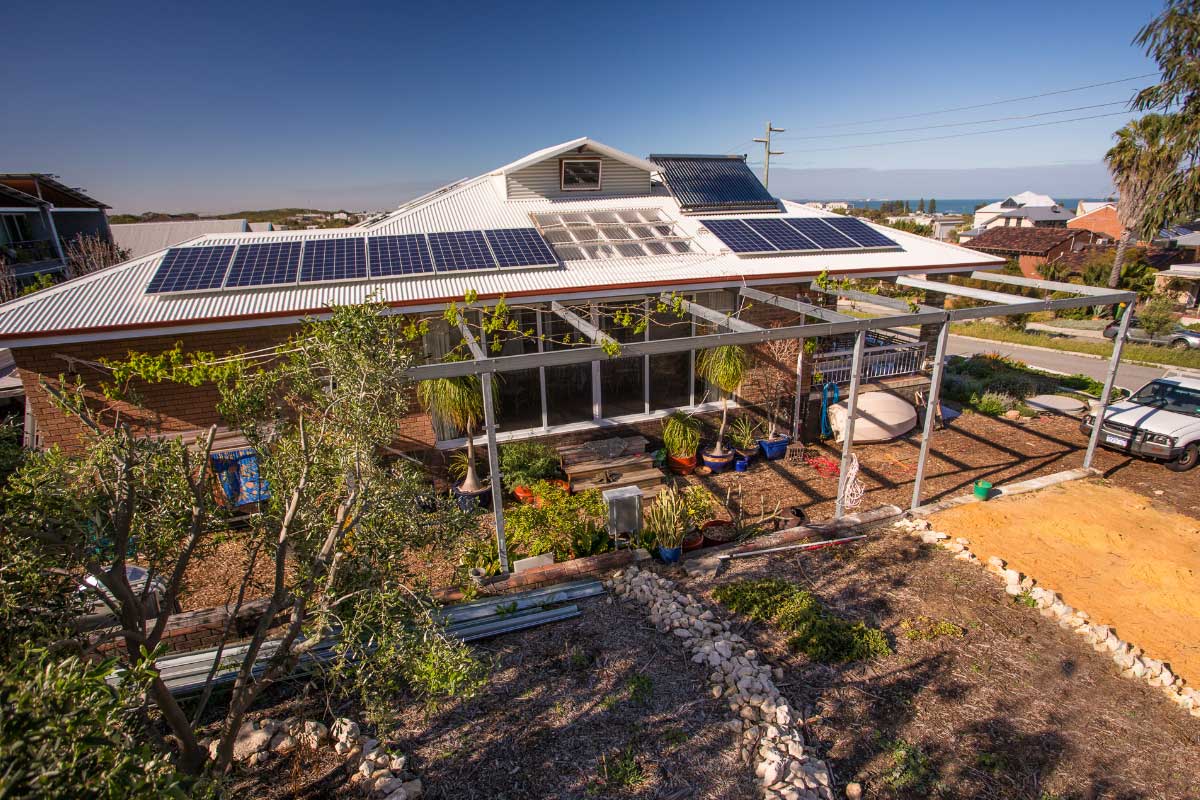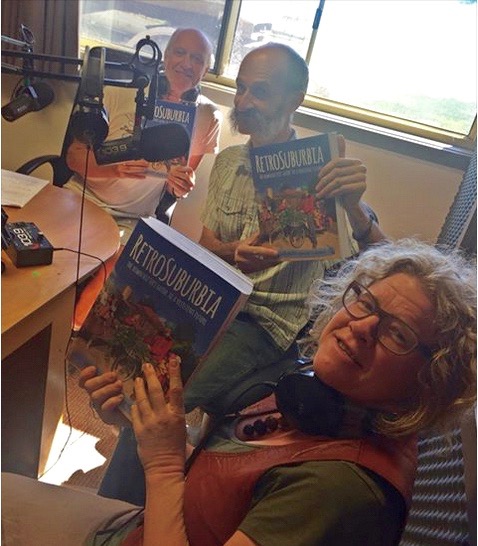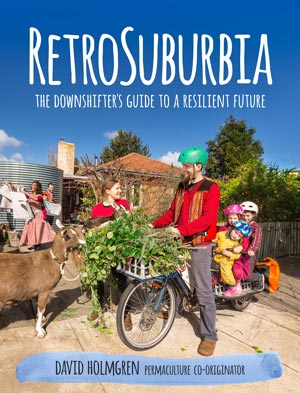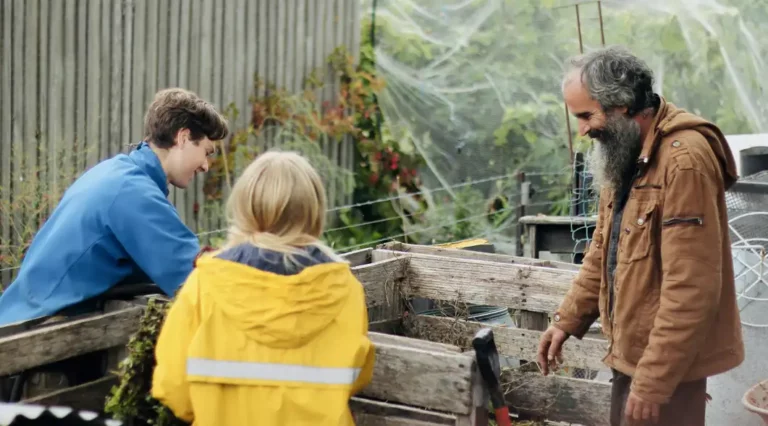Rainbow House Case Study
The Story

Rachel purchased this property in 2017 as an old house in a suburb of quarter acre blocks, with a gently sloping, grassy backyard. The only established fruit tree was a heavily pruned fig in the middle of the lawn. Various dead pot plants, garden ornaments and a few pieces of wooden furniture came with the house. One of the attractions of the property were the heavily scented old-fashioned roses.
The house also boasted a funny little yellow corner bath, a wood fire and a brand new gas oven. Old wooden fences had already been replaced with Colourbond on two sides, with a falling-down wooden paling fence on the top side of the property. Conversations with neighbours revealed that there had been fruit trees in the backyard previously but they had all been removed except the fig. The house has three phase power, and had a sound little shed in the backyard.

Rachel began weeding, planting vegetables and collecting verge finds (with permission) before the sale of the property was finalised. She spent the first year observing, collecting building materials and building temporary garden beds and animal pens. Chickens and guinea pigs were the first animals to be kept, with some roosters raised for eating and Silkie chickens for pets and hatching eggs.
Single-season raised garden beds were built from strawbales, which broke down into rich garden soil, and filled with bought garden mix. Unwanted ornamental plants like agapanthus and palms were gradually dug out and given away or sold.
The soil has a layer of coffee rock one spade depth down, so building more soil was a priority. A truckload of woodchips was dumped in the back corner in the first year, while there was still clear access through the yard. This was slowly spread around to mulch out the kikuyu at the back of the yard.
A year and a half later, another load of woodchips was dumped at the front of the backyard to cover the rest of the grass. One small area of grass was retained under the washing line, for lounging and games. This will be mowed using free range guinea pigs or a handpushed mower.
At the end of the first year, Rachel marked out fruit tree sites in the front and backyards with stakes and observed them for a few months, making changes as necessary. Neighbours noted that their fruit trees had done poorly until they dug them up, punched a hole through the rock layer, and replanted. So Rachel engaged a contractor to auger 500mm deep holes at all the planting sites. After adding a handful of dolomite, rock dust and worm castings to every hole, a couple of friends helped to get the trees in the ground.
Most of the stone fruit is inside the chicken pen, so that the chooks can help with fruit fly control and the space can be fenced off from fruit-eating birds in the future. Another section has been fully mulched and planted into a food forest with evergreens including citrus, avocado, bananas and feijoa. The heritage apples are in the future duck pen and can be fenced over later.
The cubby strip is planted with sugarcane, strawberry guava, blackberries, a crab apple and future blueberries (currently waiting in pots). The front yard was planted with dwarf pears, another crabapple for apple pollination and jellies, and another feijoa. This area will be a medicinal and ornamental cottage garden, with roses, herbs, flowers and fruit.

WWOOFers and Workawayers have helped to mulch, weed and plant the backyard, as well as learning how to make sourdough bread, kimchi, kombucha, soap and beeswax wraps. In early 2020, two Workawayers built a bike shed from free pallets and painted it with discarded paint.
For the first year and a half, over a hundred Couchsurfers stayed for a night or two each, bringing stories, traditional foods, wine or help with the dishes. Up to five housemates have lived in the two spare bedrooms at one time. The house has four bedrooms, with two master bedrooms, so there is ample room for tenants and guests. A simple bucket compost toilet in the shed takes the pressure off the single bathroom.
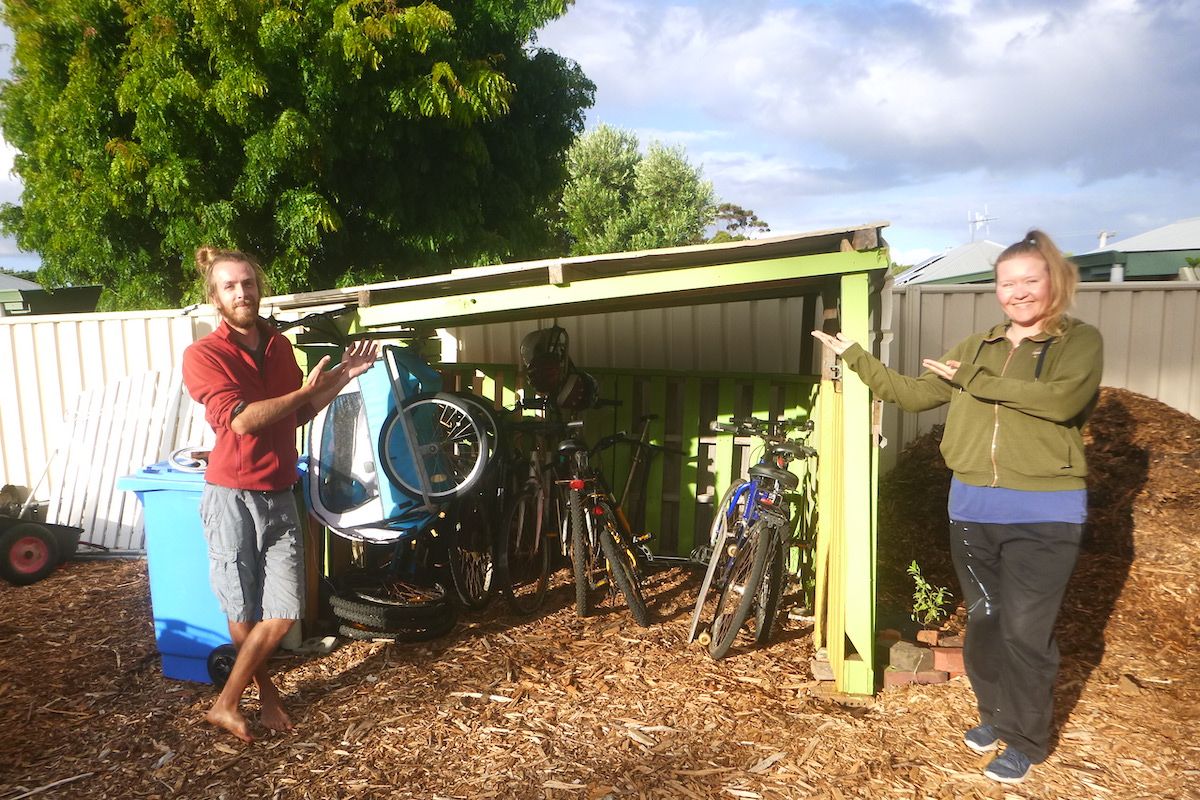
In the second year, Rachel sold some shares and used the money to buy a grid-connect solar system ($6000), three water tanks ($3200) totalling 10 500L combined, and a 170L heat pump hot water heater ($2700), with a $3000 total government rebate between them. This has reduced the house electricity bills to zero or even $40 credit in summer and under $100 in winter, as they export far more than they consume. There is no TV, microwave, electric kettle, clothes dryer or dishwasher, so space heating and guest’s hairdryers are the highest draws on power.
The gas bill is also reduced after switching away from gas hot water. Two slimline water tanks are connected to the house using an Aquasaver device, which automatically switches to tank water when available and then back to mains. With hindsight, this device wasn’t really necessary because the tank water levels can be monitored by tapping and the pump can be turned off manually when rainwater is running low.
Another watertank collects rainwater from the shed and provides garden water to the back of the yard, and to fill up the outdoor bath. The shed roof is clean zincalume sheeting with no overhanging trees on the collection side, so the water in this tank tastes cleaner than the house tanks from the tile roof. Rainwater containers for drinking are filled up by hand from this back tank.

Money is limited as the sole owner of the house is a single parent with a part-time job, so much use is made of the local tip shop, Buy Nothing and other swap Facebook pages, local contacts, skips and verge-side hard rubbish collection. Wooden fencing poles were gifted from a friend’s bush block.
Other friends gifted rolls of wire, a gate, the top of a Hills Hoist clothesline, an aviary and small animal cages. The chook house was built from pallets and painted with leftover paint from the tip shop. The lawn is being mulched out with anything from cardboard to old lino, sheets of metal and trampoline mats (UV and tear resistant, non-toxic and safe to walk on). Old carpet is not used to avoid chemical contamination.
In mid 2019, Rachel began homeschooling her ten year old son. There is plenty to learn in this ever-evolving household, from bike repair and maintenance, to preserving the harvest, to stories from guests about the politics and geography of their home countries.
Next stage will be to build an extensive annual vegetable garden near the kitchen, insulating the roof space, constructing a deck with grape vines for entertaining, developing the front yard cottage garden, building an earthbag circular goddess garden at the back of the yard and adding a greenhouse to the back of the house. Rachel has plans for a produce swapping station in the front yard, community workshops, book exchange, edible street plantings and other ways of encouraging connections and building resilient local networks. The neighbourhood is a mixture of rentals and long-term residents, with limited infill.
Older neighbours tell stories of passing plates of fish fillets over the back fence and swapping vegetables in season, but as the neighbourhood has developed the low wooden fences have replaced by high Colourbond fencing and neighbourly interaction has decreased. A street Christmas party in 2018, held on a council verge with flyers dropped to all houses on two streets, was attended by a dozen older residents bearing plates of food who are familiar with the spirit of local gatherings.
Summary + Statistics
Retrosuburban Real Estate Checklist rating: 3 suns (2017), 6 suns (2019)
Location: Albany, WA (pop. 37 000). 410km south of Perth. Yakamia, WA 6330
Build: Fibro & tile house 1968, extension 1974
Household Form and Tenure:
- Adjacent houses
- Country town
- Household landlord
- Own with debt
Rainfall: 927mm
Soil: Sand over rock over clay, low level of heavy metals in various places, previous incinerator site, areas of compaction and buried rubble
2019 Property Value: AU$260000
Household: Single mother and son, up to five tenants/travellers
Animals: None
Land Size: 912m²
Floor space: 104m²
Roof area: 133m²
Water tank storage: 10500lt
Tank water use: Varies
Mains water use: 70lt per day
Power: 2.16kW Grid-tied solar
Annual Power Exported: 1460kWh estimate
Annual Power imported: 730 – 2650kWh
Av. Power produced: 4kWh p/day (varies with season)
Annual Gas Used: 900MJ
Av. Power used: 2-3kWh p/day or 5-7kWh p/day with housemates
Annual Wood used: 1m³
Food production: Some of vegetables, fruit, meat (chickens); 100% of herbs and eggs.
Waking hours at home: 75% One adult working part time.
Site Plan
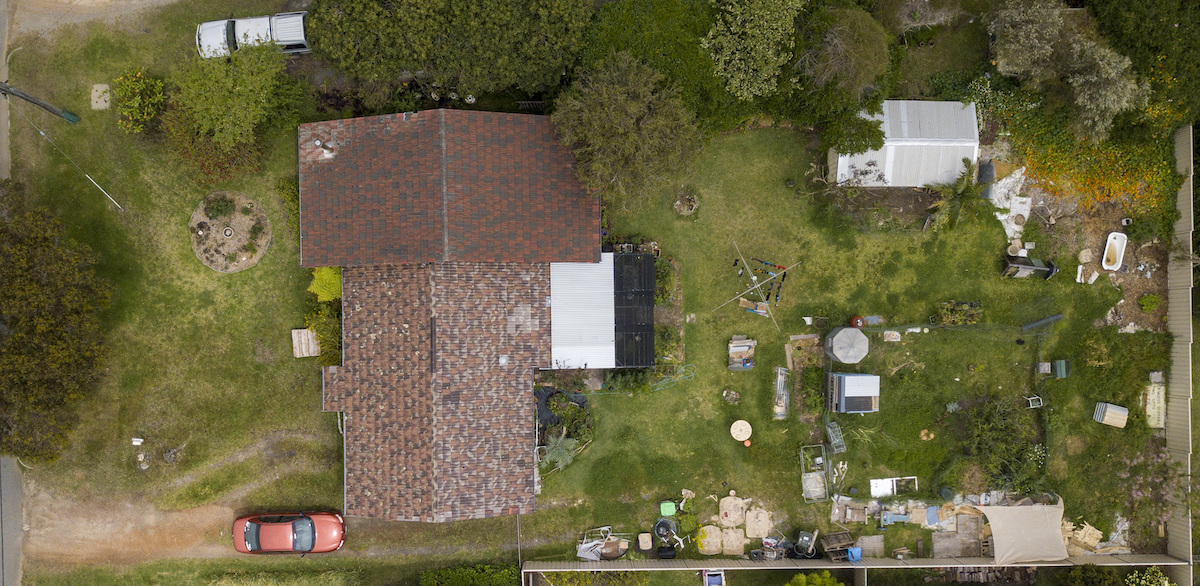
More Case Studies

Our property is the result of a much longed for home. We were living in Melbourne for some years (me working for Cultivating Community and Anton working for the Alternative Technology Assoc.) and
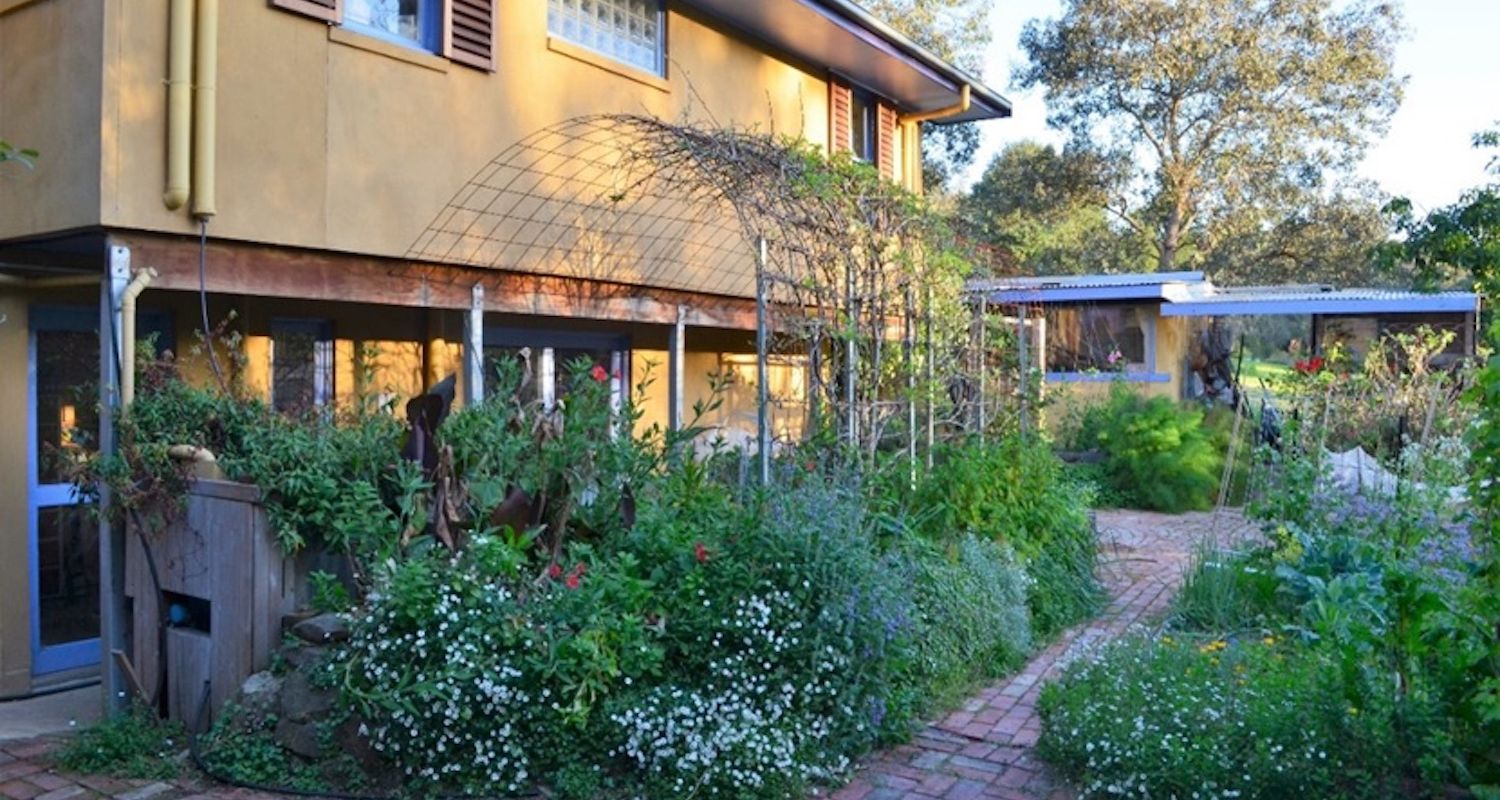
The Solomons were looking for a suburban farmhouse with generous-sized but basic rooms, established fruit trees, a bit of land and a northerly aspect. They found it in Research: a basic comfortable house 25 km from the centre of Melbourne on two thirds of an acre of land...

Goshen & Katrina were looking for a small family home within walking distance to schools, transport and shops. In 2008 they found a renovated, 1950’s brick-veneer home on 1,000m² of land only 3 minutes walk from the high street.

Eco-Flat Brisbane is a one-bedroom apartment that is slowly being retrofitted to support a low cost, contented way of living. Our intention was to have no mortgage or other debts, free of car ownership and living as lightly as possible.

In 2011, Theo Kitchener and Roger Sharp envisioned a permaculture and appropriate technology demonstration sharehouse to show how much could be done in a rental in the suburbs. They wanted somewhere affordable where they could settle in and stay long term, with a large garden, close to a...

In early 2014, we relocated to Lilydale, Victoria from south-east Queensland to pursue new work opportunities. Our plan was to stay for around three years and use this period of settlement to learn to grow food.
